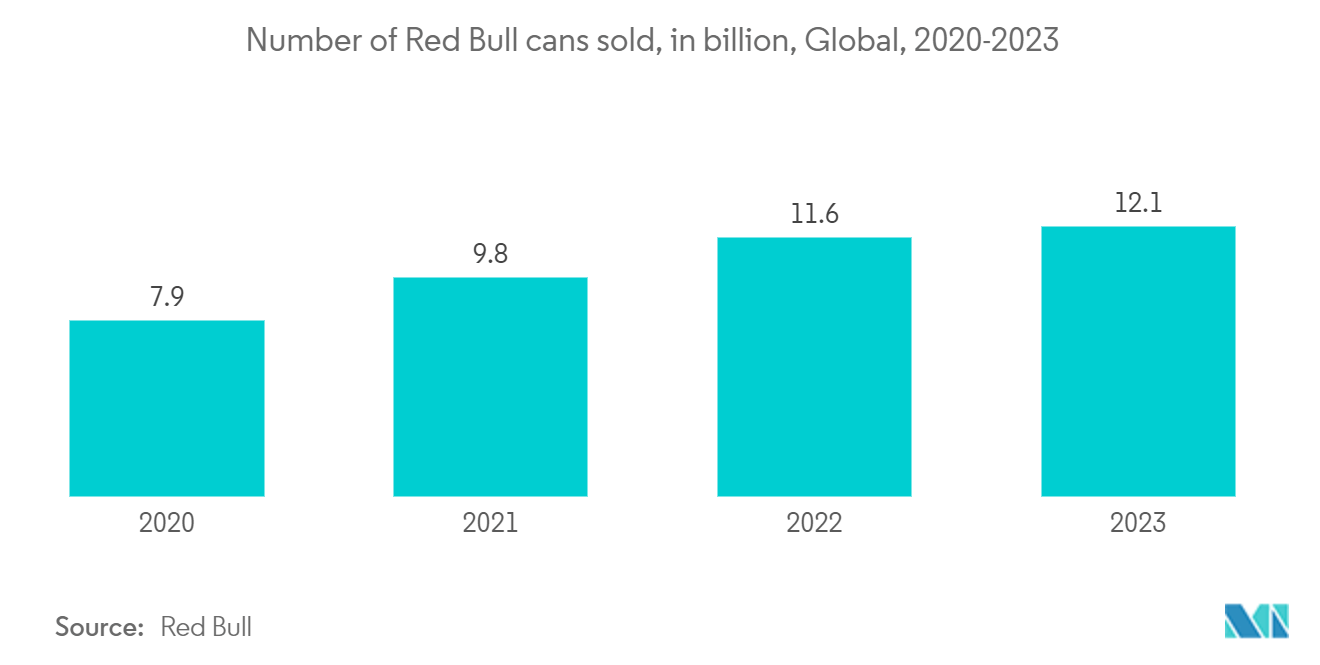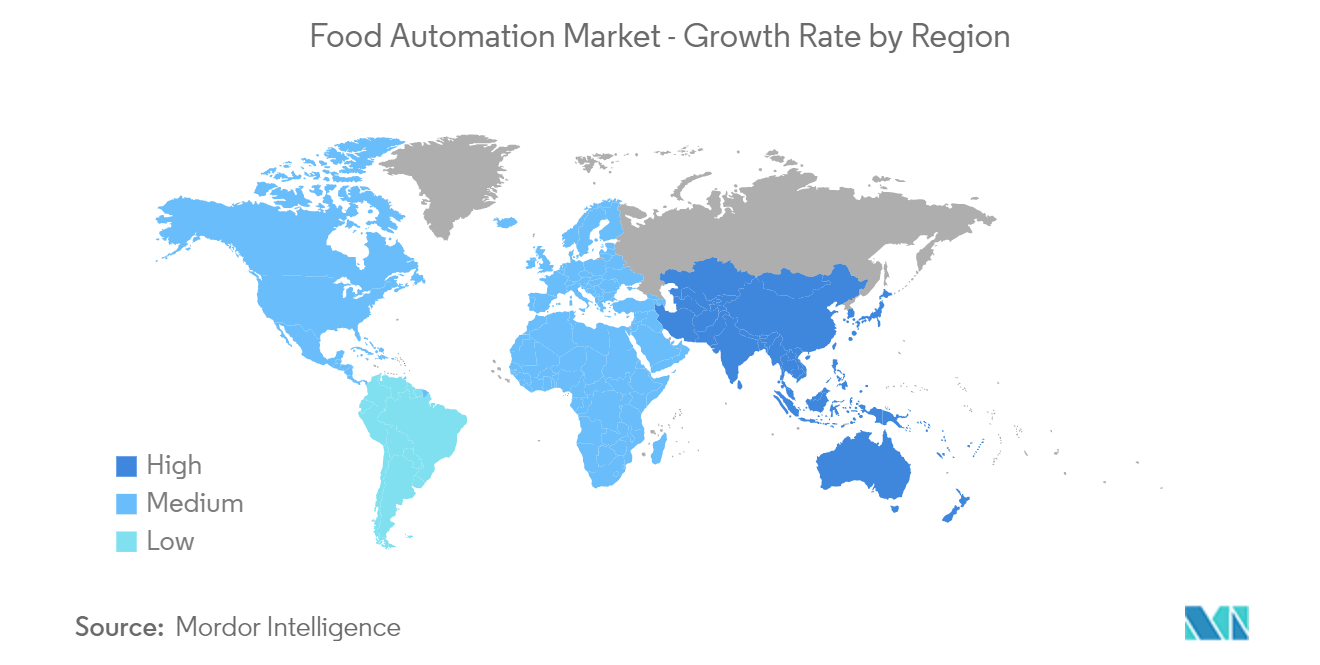Market Trends of Food Processing Automation Industry
Beverages End-user Industry is Expected to Hold Significant Market Share
- The beverage industry has been among the leading adopters of automation and robotic solutions, enabling manufacturers to combine slow batch production with high-speed filling and other packaging operations. Automation solutions such as autonomous robots, palletizers, robotic arms, etc., also help companies efficiently manage the warehouse and reduce product damage due to human error.
- One of the most basic functions of automation in a beverage plant is the prevention of fundamental mistakes, like mismatching products with packaging, incorrect labeling, inappropriate handling, etc., which can often happen due to human error.
- With product lines diversifying with more new beverage types and flavors and regulatory and product safety requirements tightening with increasing demand for freshness and convenience, the role of automation is becoming increasingly prevalent in the beverage industry.
- The growing market demand for alcoholic and non-alcoholic beverages also encourages vendors to adopt automation solutions as they help speed up the production, packaging, and warehousing processes. Software solutions such as warehouse execution systems (WES) and process monitoring software are increasingly being integrated with autonomous hardware and production robots to help beverage manufacturers have real-time data regarding the quality and efficiency of the process. These solutions also enable them to undertake preventive maintenance based on real-time data.
- Beverage production has witnessed steady growth over the years. The factor that is largely contributing to the demand for automation is the increasing consumption of packaged beverages. The major contributing factors behind this growth are changing consumer lifestyles, especially in emerging regions, and the rapid expansion of distribution channels and e-commerce. According to Barth-Haas Group, in 2022, the global beer production amounted to approximately 1.89 billion hectoliters.

North America is Expected to Hold Significant Market Share
- The United States is witnessing a significant growth rate owing to the region's growing food and beverage industry due to health awareness, disposable income, and increasing urbanization. As a result, many companies in the F&B industry are moving from manual processing to automation to grow output and develop new products, which may ultimately drive the market's growth.
- The growing urbanization in the country is further driving the market's growth. According to the World Bank, the United States is one of the earliest nations to industrialize, and it has had a comparatively high rate of urbanization over the past two centuries. By the midpoint of the century, almost 90% of the population is expected to live in an urban setting. Furthermore, the total population in the United States living in urban areas is anticipated to grow by 84.86% by 2030, leading to the increasing demand for food and beverages in the country.
- Moreover, according to the National Agricultural Statistics Service, the United States produced about 226.6 billion pounds of milk for human consumption in 2022, an increase from 218.3 billion pounds of milk in 2019. The increased food and beverage production in the region is anticipated to boost the growth of the studied market.
- According to BDC, the Canadian food and beverage (F&B) industry is anticipated to grow by more than 11% by the end of 2025. About 46% of Canadian food processors invest in advanced or emerging technologies.
- The increasing incidences of foodborne diseases and food poisoning cases caused by contaminated packaged food have increased the need for a more secure and safe food production process, which may be accomplished with the assistance of industrial robots. This is propelling the food automation market.


